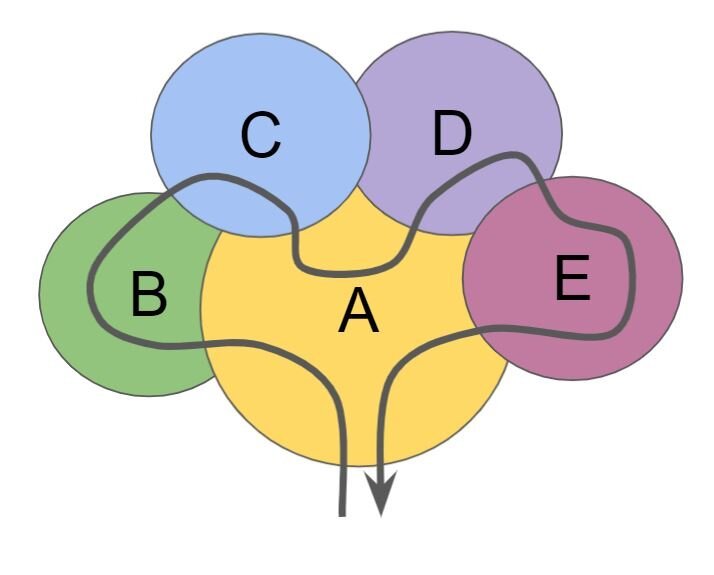Bubble diagrams and the basic basics of spatial storytelling
Bubble diagram 1 : “The Charge on Through" aka “The Linear Accelerator”
Bubble diagram 2 : "There and Back Again"
Have you ever been through a visitor experience where a lot of effort has been put into the details… but the basic structure somehow feels wrong?
You can tell, because as you leave you will usually find yourself thinking something like “I wasn’t sure why we ended up at X” or “I was confused about why they were telling us Y at that point”.
With a very few honourable exceptions, like the excellent “Puzzling World” in Wanaka, most visitor experiences aren’t about confusing visitors. They may aim to challenge or even disturb them, but straight out confusion is a sign that something is wrong.
And yet, it happens quite a lot. Even experiences which have clearly had a lot of love, attention and money lavished on them can sometimes miss a crucial step in the storytelling process. When this happens it’s a terrible shame, because there is no coming back from it. If the story is misshapen and confusing, the experience will never be fully satisfying, no matter how clever the execution.
So how do you avoid falling into this trap? For us, it’s about focusing on a few basic questions at the start of the process.
The most basic of all is: what is the story?
This might seem like a childishly obvious question. But it’s often not really asked, or only incompletely answered.
Bubble diagram 3 : "The Chewy Centre”
The next basic question is: who is the visitor? And the follow-up questions to that are: what does the visitor know about the story? And: what do they need to know to make the visitor experience satisfying? Again, absolutely not rocket science. But again, surprisingly often these questions are not really thought through before planning begins.
The next question is a little trickier and can only really be answered once you have immersed yourself in the details: what are the major divisions of the story? ‒ which is another way of starting to ask how you are going to tell the story.
It’s at this point that one of the most laughably simple tools in our business comes into play - the bubble diagram.
The whole point of bubble diagrams is that they are very simple and conceptual, so they are great way of starting discussion about basic spatial storytelling - including, inevitably, ideas around circulation which start to shade into real design questions about how the story is actually going to play out in space.
Go through any successful visitor experience and, if you think about it afterwards, you can probably piece together the bubble diagram that sits underneath it, making sense of the whole thing.
Bubble diagram 4 : “The Triple Dip”





